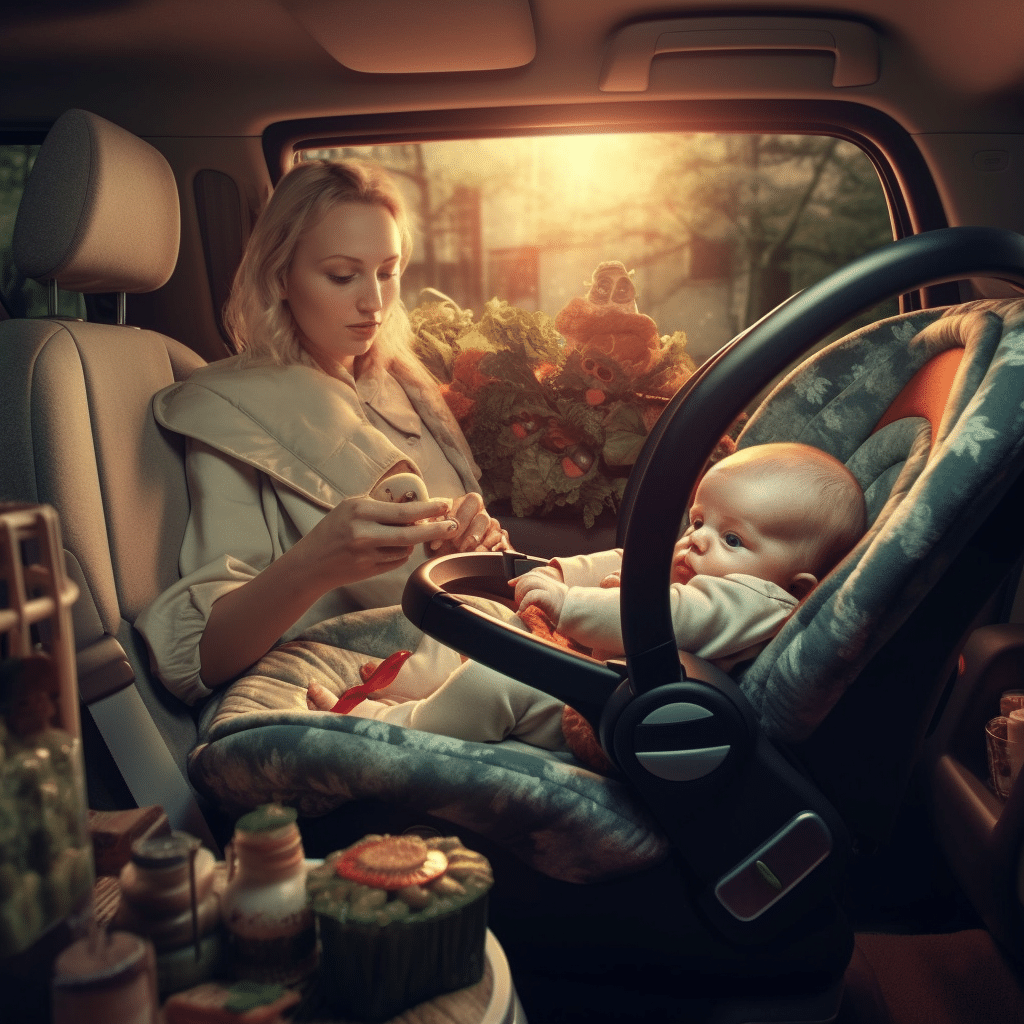
Feeding Newborns in Car Seats: Risks and Alternatives
Introduction
Can you feed a newborn in a car seat? No! This is dangerous. Babies need to be in an upright position when they eat, otherwise there is a risk of breathing difficulties and choking.
Plus, it can lead to poor feeding habits.
It’s best to prioritise safety and comfort over convenience. Don’t take the risk!
Understanding Newborn Feeding Needs

Text: Newborns need special care when it comes to feeding. Here’s a comprehensive guide to help you understand their unique needs.
Feeding Method: Breastfeeding – Frequency: Every 2-3 hours – Quantity: 1-2 ounces.
Bottle Feeding – Frequency: Every 3-4 hours – Quantity: 2-3 ounces.
Breast milk digests faster than formula. Breastfeeding also optimizes bonding between mother and infant. Bottle feeding helps parents share feeding responsibility with caregivers.
Remember to burp your baby after each feed to expel air. Create a calm and quiet environment, avoid overstimulation. Keep hygiene in mind – wash hands before handling bottles or breastfeeding. Sterilize bottle equipment and ensure formula is prepared safely if applicable.
Understand your newborn’s unique needs for their growth and development. Following these suggestions will provide the best nourishment for your little one. Stay safe and don’t forget car seat safety guidelines – they are no joke!
Car Seat Safety Guidelines
Newborns must always be secured in a car seat when travelling for their safety. Here are some guidelines that parents and caregivers should follow:
Age: 0-2 years.
Car seat type: Rear-facing.
Installation instructions: Follow manufacturer’s instructions.
Buckle type: 5-point harness.
Chest clip position: Level with armpits.
Loose objects: Avoid placing any loose objects as hazards.
A study by the American Academy of Pediatrics (AAP) showed that correctly installed and used car seats reduce the risk of infant injuries when travelling. Eating a gourmet meal while wearing a straightjacket? That’s like feeding a newborn in a car seat.
Challenges of Feeding a Newborn in a Car Seat
Feeding a newborn in a car seat can be tricky! There are various challenges. Firstly, the restricted space makes it hard for parents to hold the baby comfortably. Secondly, the angle of the car seat can cause discomfort and make swallowing tough. Thirdly, the motion of the car can disrupt feeding and lead to spills or choking hazards. Fourthly, it can be hard for parents to monitor their baby’s latch and ensure they are getting enough milk. Lastly, proper burping may not be possible.
So, what can parents do? Well, a travel-friendly nursing pillow can provide support and help position the baby better. Also, choose a car seat with adjustable recline options for comfort and swallowing. Plan feeding times carefully, avoiding traffic or rough roads. And, offer frequent breaks during longer journeys to avoid spills and interact with baby.
Alternatives to Feeding in a Car Seat
So, what else can you do? You can breastfeed or bottle-feed with a nursing pillow for support and stability. Alternatively, you can use a wrap or baby carrier for hands-free feeding. Reclining chairs or a bed can provide a relaxed setting. Additionally, having a designated area with the right seating can be helpful.
It’s important to remember: car seats are not suitable for feeding. This can cause risks like choking and discomfort.
Find the right method for you and your baby. Bonding moments need the right nurturing for well-being.
Expert Opinions and Recommendations

Can you feed a newborn in a car seat? We asked experts for their opinions and recommendations. Here’s what they said:
Pediatrician: Feeding in a car seat is risky. Choking and improper digestion could occur. Always feed your baby outside the car seat with support and proper positioning.
Car Seat Safety Specialist: Feeding in a car seat endangers safety features. Pull over to a safe place when baby needs to eat.
Pediatric nurses warn that burping could be hindered, leading to discomfort or reflux. So, prioritize safety and create a good feeding environment.
To ensure effective feedings:
- Look for rest areas. Plan ahead and find shaded areas or breastfeeding rooms along the route.
- Use supportive pillows. These help maintain correct positioning and reduce strain on you.
- Establish a feeding routine. Synchronize it with travel plans to minimize on-the-go feedings.
Prioritize safety and create good conditions for feeding. Remember, explaining milk stains to your car insurance company might be harder than explaining why your child is named after a famous ninja turtle!
Conclusion
Feeding a newborn in a car seat can be convenient for parents on the go. But, it is important to only do so when the vehicle is not moving. Safety must be the top priority!
It is essential to ensure that the seat is properly installed and secured. Bottle holders or other feeding accessories are a good idea too.
Position the car seat so that the baby’s head and neck are supported. Cushions or inserts can be used for this purpose. It will make feeding easier and more enjoyable.
Safety should always be considered when feeding a newborn in a car seat. Installation, head and neck support, and stationary vehicle are key factors.
Pro Tip: Plan ahead and schedule regular breaks for feeding and comforting your baby outside of the car seat! This will ensure their safety.